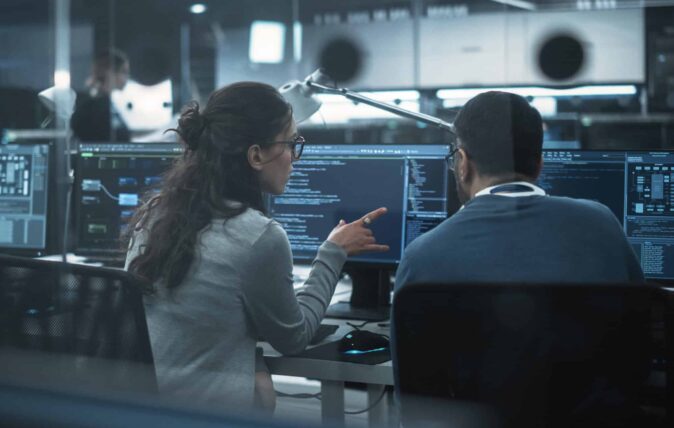How Corporate Security Teams are Evolving
In light of new demands on intelligence programs, security teams have made changes pertaining to team composition, new technology, and the maturing of their programs.

Over recent years there have been a number of distinct changes that we have observed as it relates to how corporate security teams operate across all industries.
First, the makeup of our investigative teams has begun to change in light of the new demands of our intelligence programs. Second, technology and data have grown to play a significant role in how our programs operate and how they are evaluated. Third, corporate security programs are undergoing a maturing stage – becoming more standardized like other legacy programs. All of these evolving points influence our day-to-day work, and we foresee their impact continuing to grow in the future.
Team Composition
The composition of our teams has become notably younger, more academic, and more tech-savvy. This is easily evident if you conduct a simple search on LinkedIn for roles relating to corporate security or if you attend any industry conference such as ATAP or AIRIP. The professionals executing work in corporate security programs and those leading teams increasingly fit the bill noted above – and this has its advantages for several reasons.
Having a team of digital natives (those who have grown up during recent digital technology advancements) is a great advantage. They can easily learn and adapt to new tools and techniques required to carry out your organization’s mission with efficient means. Plus, they are often technologically curious and always inclined to learn about new methods for performing their work. Having team members like this is a great asset because they stay on top of current trends and are then willing to teach others in your organization, thus increasing the efficacy of your team.
Previously, where we may have seen corporate security teams dominated by those with past government, military, or similar experience, we are now seeing an influx of young professionals with remarkable academic backgrounds. It’s common to see a GSOC or investigative program with several team members who hold advanced degrees in international studies or related criminal justice disciplines. Additionally, many of them have completed notable internships with NGOs or have served in varying degrees of public law enforcement. Being able to source talented professionals with diverse academic backgrounds can add great value to our programs, especially given how much weight is placed on written products and presentation skills in our line of work.
Although team members with technology and academics as strong suits can be remarkably helpful, the importance of tempering their work with the expertise of senior team members cannot be overstated. We have found that teams do their best work when there are open lines of communication and collaboration between these two cohorts. Like so many other areas of our work as security professionals, everything comes down to knowledge sharing among team members. When younger team members learn from their more experienced counterparts yet are still given permission to creatively ideate, the benefits for the entire program are enormous.
Technology’s Growing Role
The role that technology plays in our corporate security programs has grown increasingly, along with the required technical knowledge of our operational team members.
Think about this…Can any enterprise claim to have an adequate corporate security program if they don’t have dedicated technologies for social listening, incident monitoring, investigations and case management, asset tracking, secure communications, proprietary data sources for researching persons of interest, and a travel risk solution?
Although these technology solutions tend to require hours of training and time in each system to maximize their use, they bring significant advantages to them. Each of these tools saves hours of manual, tedious work, freeing trained analysts to tackle the most demanding work requiring their expertise and creativity, such as dedicating more time to comprehensively investigating direct threats to assets.
A second advantage here is the ability to capture security metrics. Where spreadsheets and Word docs were used previously, smart technologies make it easier to quantify all of the hard work of corporate security teams. It’s much easier to demonstrate our value-add when we can point to the most basic analytics that breaks down the number of international trips that were conducted, the number of travelers that were supported, the number of threats investigated, and much more – all of which justify more resources for your team to do their best work (training, incentives, tools, etc.).
The Maturing of Corporate Security Programs
Since corporate security programs are a relatively new phenomenon, they are naturally undergoing an observable maturing stage. Previously, it was commonplace to have the savviest member of the executive protection team hold an investigative function as a secondary responsibility. However, with an emphasis on proactive security, it is becoming increasingly difficult for any program manager to confidently state that they are taking the most prudent steps possible when so few resources are actually dedicated to proactive security measures.
We are slowly starting to see fewer hybrid (field) executive protection/intelligence roles, less use of spreadsheets and Google Docs as case management tools, and more professional and dedicated approaches to corporate security.
A significant element in this maturing scenario is big (security) data. Finally, we have the ability to do much more with the data we have. We can catalog our data, assess it over time to identify trends, measure the effectiveness of our safeguards, collaborate across departments, identify anomalies, and more. The proliferation of tools enabling us to do so much more with our security data is leading us to a turning point where it is questionable if our organizations are practicing due care if they are not taking advantage of these systems that can provide an added layer of protection by proactively surfacing threats.
For example, these questions come to mind:
01
Will our organization be found negligent in the event of a security incident?
02
How will this reflect on how we value our employees?
03
How will our employees react if we are found not to be implementing safeguards that are standard throughout our industry?
Final Thoughts
We’re watching a number of themes in the corporate security space play out before us. A simple way to view it is as bridging between the tradecraft of two generations: the experienced generation that developed the tested, foundational ideas of corporate security, with the younger generation that has increasingly incorporated the use of data and technology to solve corporate security challenges.
Looking at this with a wide aperture, each of these themes has far greater benefits than otherwise: our younger investigative team of digital natives makes us adaptable, and our growing use of technologies enables us to automate a large part of the mundane work so that our talented team members can do what they do best – use their creativity to solve challenging tasks. Our maturing corporate security programs will have hiccups as we bring them up to our desired standards, but they’ll make our workforces and assets safer for it.








